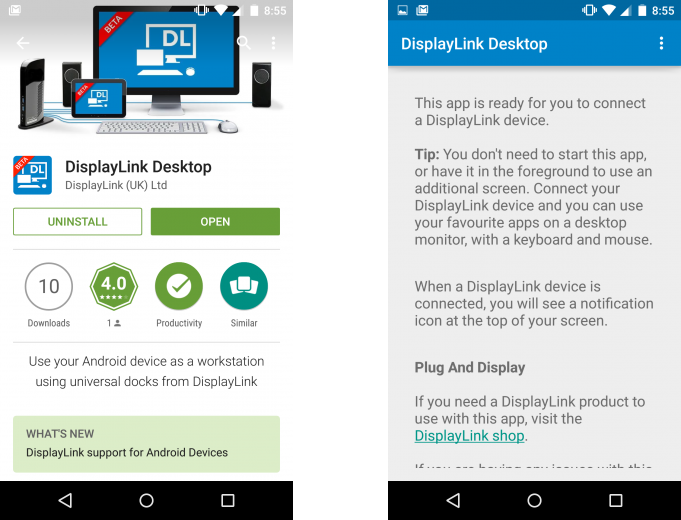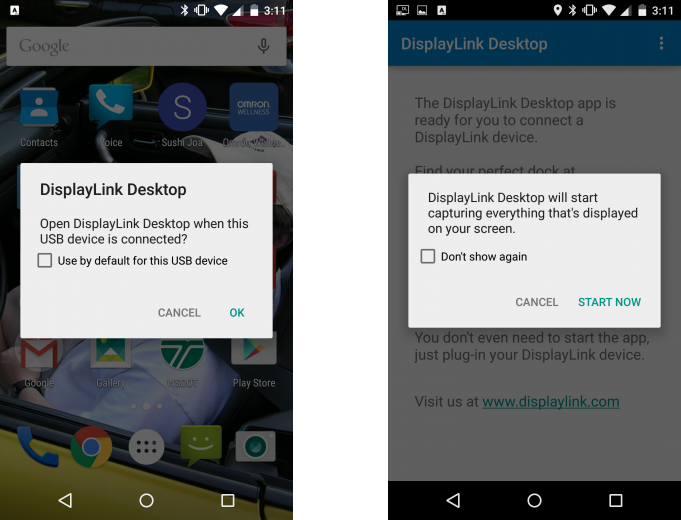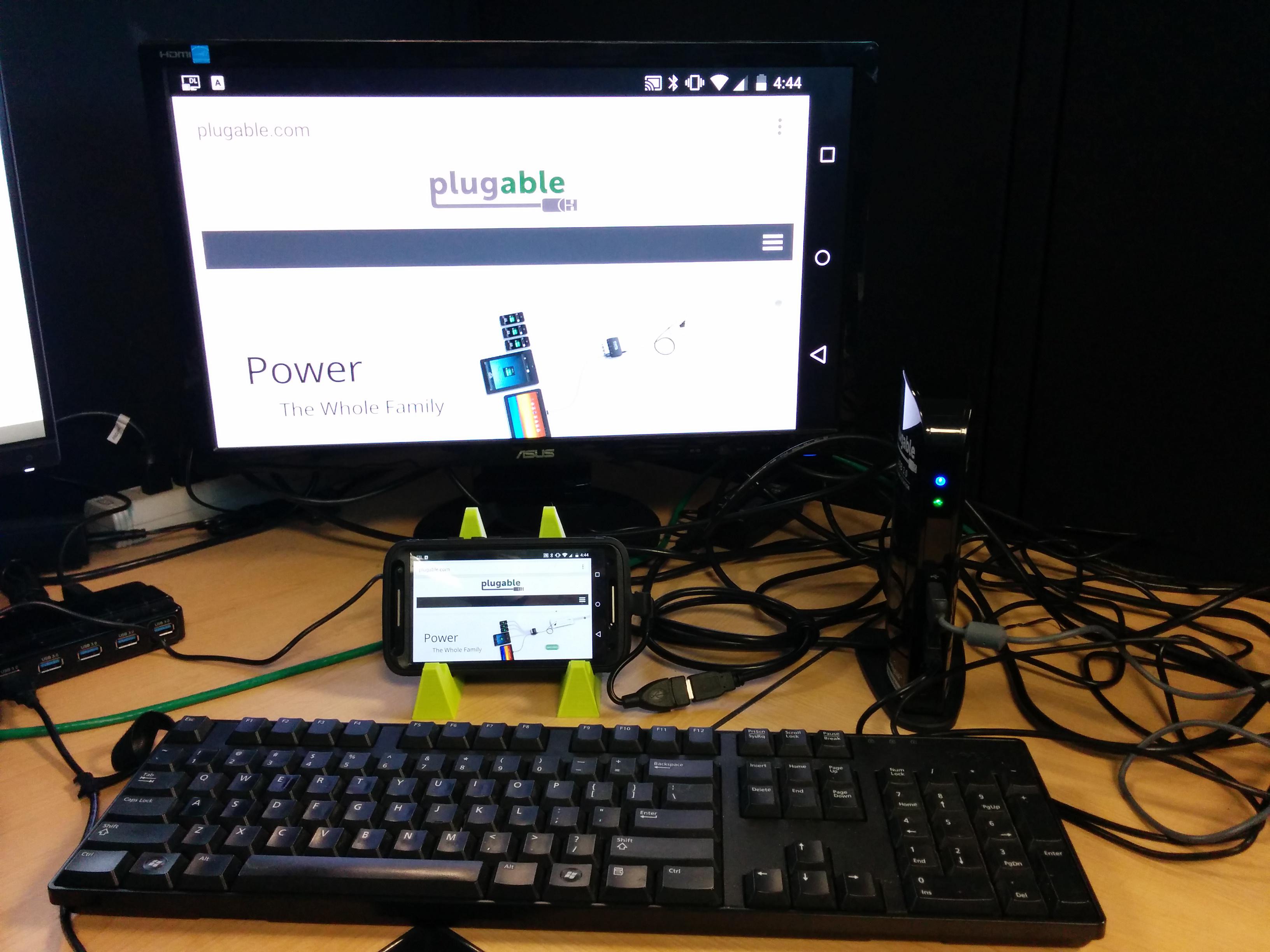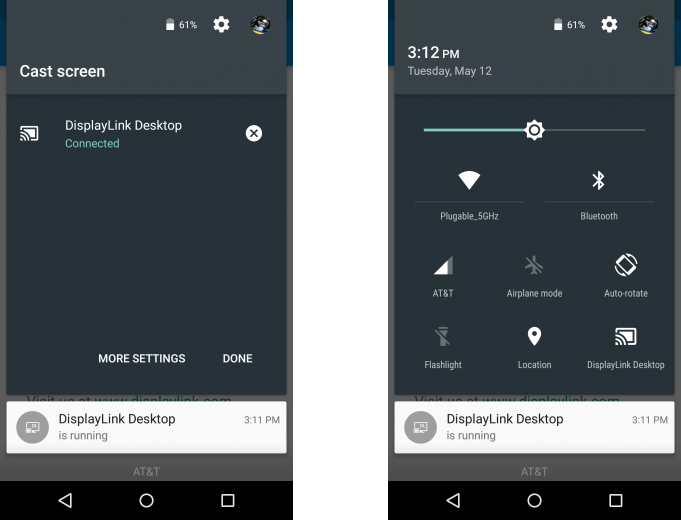As this is a beta, I did run into some issues. While testing I received a text message and that caused the application to crash. I disconnected the phone from the dock and the OS was frozen and eventually caused a reboot. Again, this is an early beta and I’m sure with time these bugs will be worked out.
Disconnecting the phone from the UD-3000 and connecting it to our UD-PRO8 docking station yields even more interesting results. Not only can I make use of the additional display but there is also support for the wired Ethernet chipset since the ASIX Ethernet chip used in the dock is usually supported under Linux, which Android is based upon. Unfortunately the Moto X Gen 2 won’t pull a charge from the UD-PRO8 while connected so while docked the battery will discharge.
Though this is just an early beta there are a lot of exciting possibilities to this new product. With further development it may be possible to use an Android phone or tablet as a primary system. We’ll keep you up to date as the beta progresses, and we’d also love to hear about your experiences in the comments section!
Most Android devices do not have a full-sized USB “A” port, as a USB OTG adapter is required to connect any USB devices.
Hardware we have tested so far:
- Motorola Moto X Gen 2 with Android Lollipop 5.0
- Google Nexus 5 with Android Lollipop 5.1
- Google Nexus 7 1st Gen (2012) with Andorid 5.1 (did NOT work)
- Google Nexus 7 2nd Gen(2013) with Android 5.0
Plugable Devices Tested and recommended for testing:
While this is beta-level support, it’s exciting to have the potential to turn Android devices into desktop replacements with keyboard, mouse, a big screen, and other USB devices. If you put it to use, please let us know your results of testing with your own devices in the comments. We’d love to hear from you!






Loading Comments